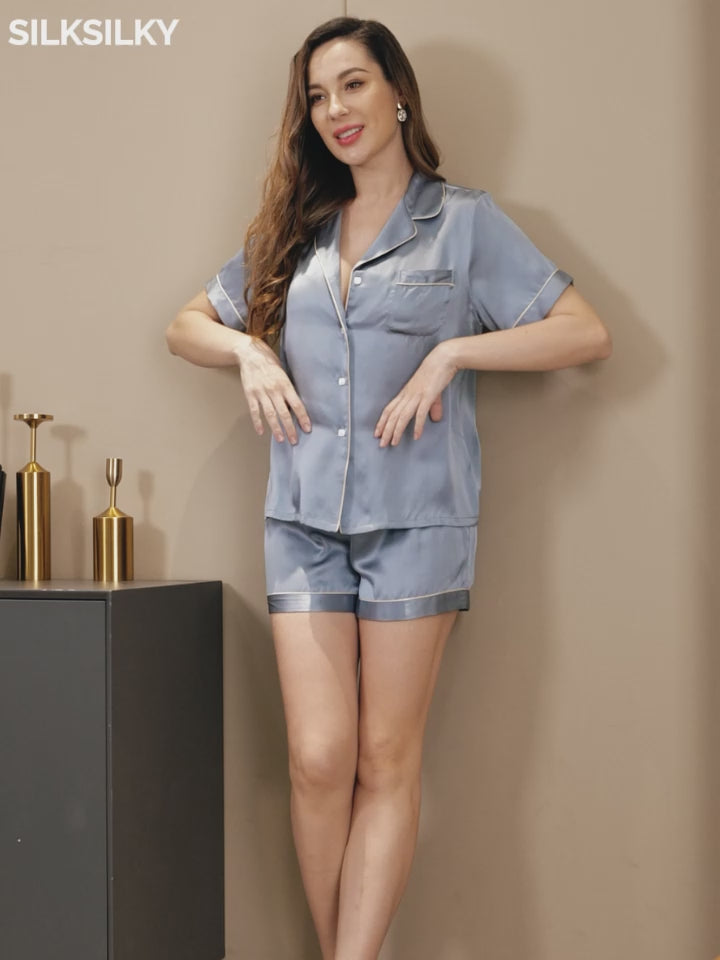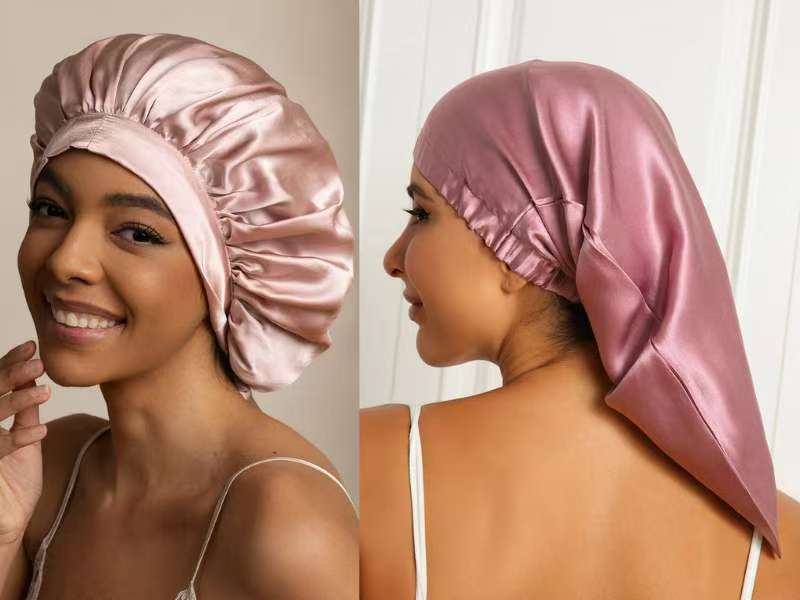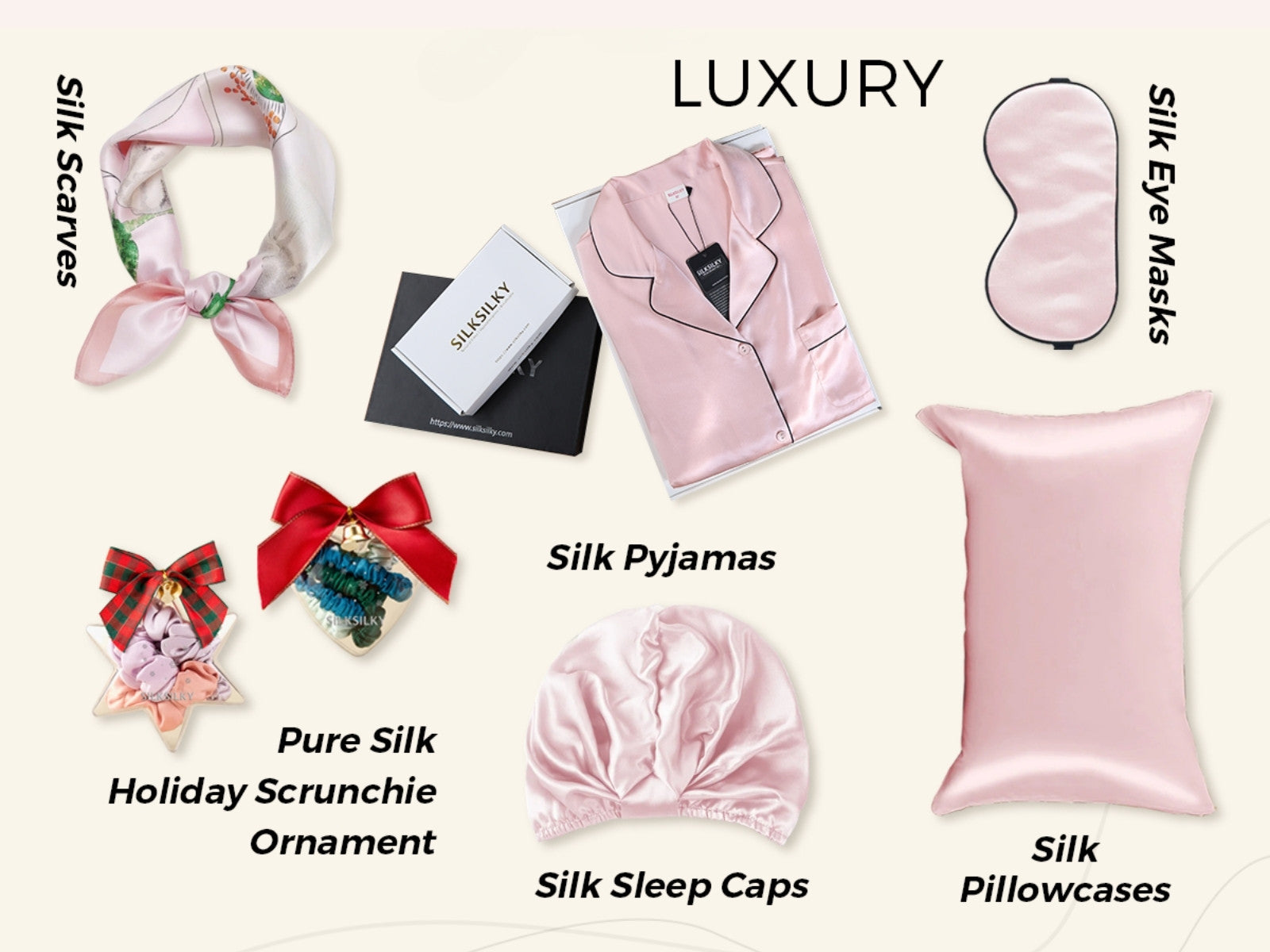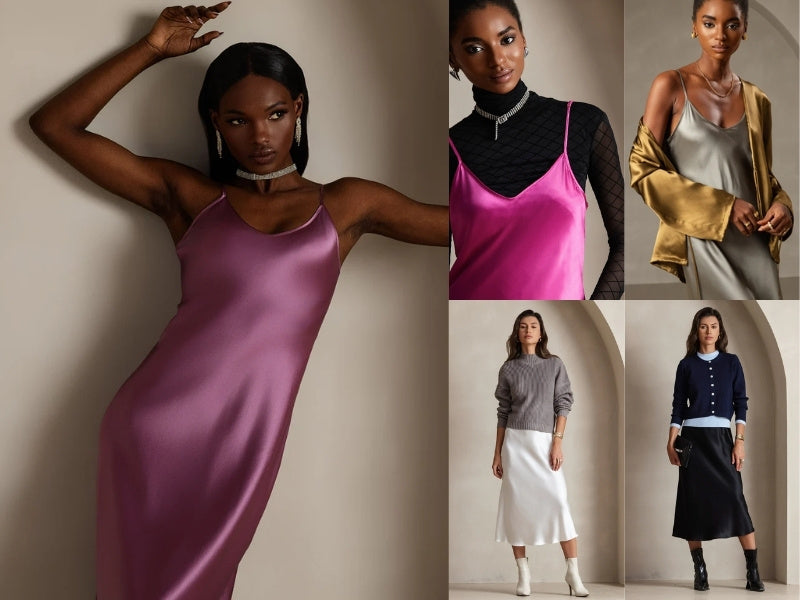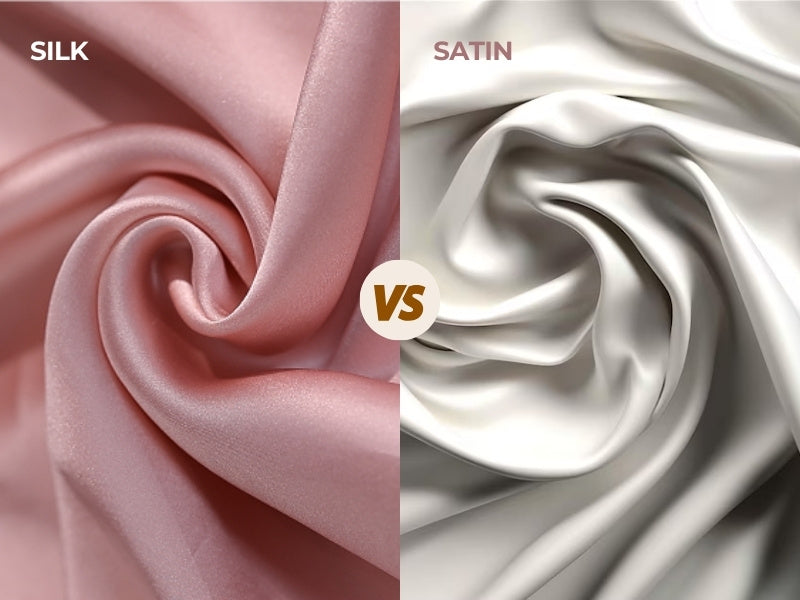Silk vs. Cashmere vs. Cotton: The Ultimate Luxury Fabric Comparison Guide
Ever wonder if silk is really better for your skin—or if cashmere is worth the price? Or maybe you just want soft, comfy clothes that don’t fall apart after a few washes. We’re putting silk, cashmere, and high-end cotton side by side to see how they compare in comfort, care, and everyday wear.
What Makes Silk, Cashmere, and Cotton True Luxury Fabrics?
If you’re shopping for high-quality clothes or home textiles, knowing what sets silk, cashmere, and premium cotton apart can help you get the most out of your investment. Here’s how each of these luxury fabrics earns its title, and what you can expect from them.
Silk
Silk is known for feeling soft and luxurious, but Mulberry silk takes things to another level. It comes from silkworms that only eat mulberry leaves, which makes the fibers stronger, smoother, and longer. The highest grade—6A—means the silk threads are nearly perfect in texture and quality. The result is a lightweight fabric that feels cool and soft on your skin. It's also gentle on hair and great for sensitive skin, which is why people love using it for pillowcases, pajamas, and scarves.

Cashmere
Cashmere comes from the fine undercoat of goats—usually those living in cold, high-altitude regions like Mongolia. It’s known for being incredibly soft and warm without feeling heavy or bulky. What really sets cashmere apart is the quality of its fibers: the longer and finer they are, the softer and more durable the fabric tends to be. When done well, it feels like wrapping yourself in a cloud. That’s why it’s a favorite for cozy sweaters, polished wraps, and winter accessories that look refined but still work for everyday comfort.
High-quality Cotton
What makes cotton feel truly luxurious? It’s all about the fiber length. Top-tier types like Egyptian, Pima, and Supima cotton use extra-long staple fibers—that means the threads are smoother, stronger, and more resistant to wear. Egyptian cotton is often hand-picked, which helps preserve softness; Pima is mostly grown in the U.S., and Supima is a certified version of it with strict quality standards. The result is cotton that feels soft, breathes well, and holds up to frequent washing. Whether it’s crisp percale for sheets or silky sateen for blouses, this cotton proves that basics don’t have to feel basic.
Which Is Better: Silk, Cashmere, or Cotton?
If you've ever wondered why one fabric feels airy and cool while another is buttery-soft and warm, you’re not alone. Silk, cashmere, and high-end cotton all count as luxury fabrics, but each brings something unique to the table. Some work better for sleeping, others for chilly mornings or busy days out. Below is a side-by-side chart to help you see exactly how they compare across all the features that matter most—from texture and skin-friendliness to maintenance needs.
| Feature | Silk | Cashmere | Cotton |
 |
 |
 |
|
| Texture & Hand Feel | Smooth, lightweight, fluid drape | Soft, warm, slightly textured | Crisp or soft depending on the weave |
| Temperature Regulation | Acts like a natural thermostat; great for sleepwear | Excellent insulation; best in cool seasons | Very breathable, but less insulating |
| Skin & Hair Benefits | Hypoallergenic, reduces friction on skin and hair | Very soft but can cause irritation for some | Safe for most skin types, but may cause friction |
| Natural Luster & Visual Appeal | Natural sheen; luxurious and elegant | Matte finish; looks rich and subtle | Depends on weave; usually low sheen |
| Durability & Longevity | Strong for its weight, but delicate over time | Can last years with care, prone to pilling | Durable with proper care; retains shape well |
| Care & Maintenance | Needs gentle handling, often dry-cleaned | Requires special washing and careful storage | Easy to wash, low-maintenance overall |
Each fabric has its moment to shine. Silk wins for comfort and skin benefits, especially at night. Cashmere is your cozy winter go-to. And cotton? It’s a reliable everyday hero with the lowest upkeep. Once you know what your days look like—warm, cold, fast-paced, or easy—you’ll know exactly which fabric to reach for.
Which Fabric Works Best for Sleep, Style, or Everyday Comfort?
Silk, cashmere, and high-quality cotton each have their place, depending on how you plan to wear them. From sleep to work to weekend accessories, here’s how to choose the right fabric based on what you actually need.
Best for Sleep: What Feels Good All Night Long?
If you want to sleep comfortably, silk is hard to beat. It’s naturally breathable and helps regulate your body temperature, so you stay cool in summer and warm in winter. That’s why silk pajamas and sleepwear feel so luxurious—they don’t trap heat or moisture. Cashmere is incredibly soft and cozy but may be too warm for some sleepers unless it’s really cold. High-quality cotton (like Egyptian or Pima) is breathable and soft but doesn’t adjust to temperature shifts quite like silk. It’s still a solid option for those who prefer something classic and easy to wash.

What Makes the Best Bedding for Skin and Hair?
Silk pillowcases have become popular for good reason—they’re gentle on skin, reduce friction, and help prevent hair breakage or frizz. People with sensitive skin or textured hair especially love how smooth silk feels. Cotton pillowcases, while more common, can be a bit rougher on skin unless you’re using a very fine weave like sateen. High-quality cotton holds up well with regular use and is simple to care for, but it may absorb moisture more easily. Cashmere usually isn’t used for pillowcases, but it shows up in soft, cozy blankets that are perfect for colder nights.

Which Fabric Looks Best at Work or Dressed Up?
If you’re getting ready for a meeting, a dinner, or even just want to feel put-together, silk is an easy win. A silk blouse or dress looks elegant without much effort and drapes beautifully on the body. Cashmere is great for layering during fall and winter—it looks polished and feels cozy, especially in sweaters or lightweight knits. High-quality cotton is the go-to for structured shirts and everyday business wear. It’s breathable, sturdy, and always looks sharp, especially in button-downs or crisp trousers. It’s also one of the easiest fabrics to wash and wear regularly.

Which Accessories Feel Special Without Trying Too Hard?
Silk scarves are light, shiny, and stylish year-round. They’re easy to tie around your neck, in your hair, or on your bag for a little extra something. Cashmere wraps feel much heavier and warmer, perfect for chilly days, airplane travel, or dressing up a coat. They’re soft enough to wear for hours without itching or clinging. Cotton isn’t used as often in luxury accessories, but lightweight cotton scarves work great in summer—especially if you want something breathable with a bit of structure.
Each of these fabrics has its moment. Silk feels luxurious and gentle, cashmere brings warmth and elegance, and high-quality cotton gives you easy comfort that lasts. Depending on the weather, occasion, or even how you want to feel that day, choosing the right material can make everything a little smoother.
Silk, Cashmere, or Cotton: How to Pick What Actually Works for You
Picking between silk, cashmere, and high-quality cotton isn’t just about which one feels nicest in the moment. The best choice depends on your budget, how you live day-to-day, and how much care you’re willing to give your clothes. Here's a simple framework to help you figure it out.
What’s Worth Your Budget?
Luxury fabrics cost more upfront, but that doesn’t mean they’re a bad deal. Think about how often you’ll wear the item and how long it will last. A silk blouse or cotton dress shirt that you wear once a week for years can cost less per wear than a cheaper piece that loses shape after a few washes. Look for signs of real quality—tight, even stitching, a smooth finish, and fabric that holds its shape over time. In many cases, a slightly higher price tag means fewer replacements in the long run.
How Does Your Lifestyle Shape the Best Choice?
Your daily routine makes a big difference in which fabric fits best. If you live somewhere warm or humid, silk and high-quality cotton are breathable, lightweight options that help you stay cool. For colder climates or layered winter outfits, cashmere provides reliable warmth without bulk. If you work in a professional setting, polished cotton pieces and structured silk shirts make sense. Have sensitive skin or allergies? Silk is naturally hypoallergenic and smooth against the skin, which may help you avoid irritation from rougher materials.
How Much Time Can You Give to Care?
Silk and cashmere need a little extra love. Silk often calls for hand-washing or gentle detergent, and cashmere does best with special handling and storage to prevent stretching or damage. If your schedule is already packed, this care routine may feel like too much. High-quality cotton, on the other hand, is much easier to toss into the wash and still look great after. If low maintenance is a top priority for you, cotton is usually the better bet.
What Are Your Specific Needs?
Think about what you need from your clothing beyond style:
- If your skin is easily irritated, silk is a soft, smooth option that won’t cause friction or dryness.
- If you're trying to protect your hair, silk pillowcases and sleep caps can help prevent breakage and frizz while you sleep.
- If you like clothing that can do more than one job, silk scarves, silk dresses, and silk tops work for both day and evening wear.
- If warmth is your main concern, a good cashmere sweater or scarf can get you through the coldest months in comfort.
- If convenience matters most, high-quality cotton is easy to wash, easy to style, and strong enough for everyday wear.
No fabric is perfect for every situation, but there’s definitely one that’s perfect for you. Once you know what you value most—comfort, care, versatility, or durability—it becomes a lot easier to shop smart and feel great in your clothes.
Which Luxury Fabric is Right for You—Silk, Cashmere, or Cotton?
Luxury doesn’t mean one-size-fits-all. Silk, cashmere, and high-quality cotton each shine in their own ways, from sleepwear to work outfits to everyday comfort. What matters most is choosing based on your routine, not just what feels soft in the store. Use what you’ve learned to invest in fewer, better pieces that truly work for you. Smart fabric choices are a simple way to feel great in what you wear—every day.
![[Light Blue] SilkSilky Pure Silk Notch Collar Women's Pajamas 001,](http://silksilky.com/cdn/shop/files/ab83afb9301666ee2f174a8ae72ffda4_4e9bb488-7880-40fe-9e69-f0fd823857c5.jpg?v=1764653199&width=1200)
![[Light Blue] SilkSilky Pure Silk Notch Collar Women's Pajamas 002,](http://silksilky.com/cdn/shop/files/db8dbeee5354fe3b631b963715847ffe.jpg?v=1764653202&width=1200)
![[Dark Red] SilkSilky Pure Silk Notch Collar Women's Pajamas 001,](http://silksilky.com/cdn/shop/files/599ed0811e1a5fcfa55bdc80a0279704_2643c850-a793-4475-a52b-7fef1bbd7e36.jpg?v=1762233837&width=1200)
![[Dark Red] SilkSilky Pure Silk Notch Collar Women's Pajamas 002,](http://silksilky.com/cdn/shop/files/9e022d4dd4f99aed4af8da3f58fcfd5b_efb9bafe-3d71-4283-9b81-e339ff08f352.jpg?v=1762233837&width=1200)
![[White] SilkSilky Pure Silk V Neck Nightgown 001,](http://silksilky.com/cdn/shop/files/a8ae95260a57844b1e2e00c4fcfabdcc_b922b270-af10-4e96-9493-0d877bd663db.jpg?v=1764140639&width=1200)
![[White] SilkSilky Pure Silk V Neck Nightgown 002,](http://silksilky.com/cdn/shop/files/24ac506750f8c38c51bb5b6d0ee15287.jpg?v=1764140639&width=1200)
![[Pink] SilkSilky Pure Silk Sleep Cap 001,](http://silksilky.com/cdn/shop/files/SilkSilky_Pure_Silk_Sleep_Cap_Pink_001_C-250529006.jpg?v=1762221980&width=1200)
![[Pink] SilkSilky Pure Silk Sleep Cap 002,](http://silksilky.com/cdn/shop/files/SilkSilky_Pure_Silk_Sleep_Cap_Pink_002_C-250529006.jpg?v=1762221980&width=1200)
![[Steel Blue] SilkSilky Pure Silk Notch Collar Women's Pajamas 001,](http://silksilky.com/cdn/shop/files/05b358f92fb5d252122b00d69a2fcfc5_88211a42-88c4-4448-8cb3-5f18529bfef8.jpg?v=1762237226&width=1200)
